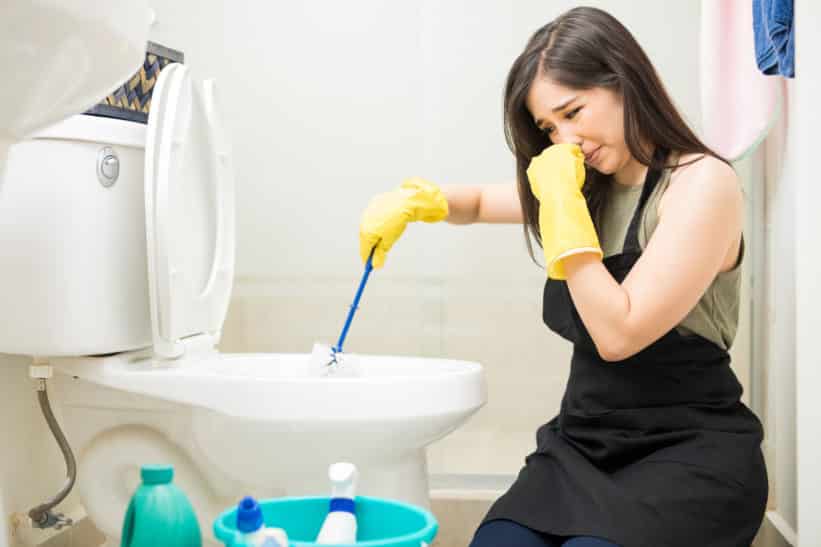Conquering the Clog: A Comprehensive Guide to Unclogging Your Toilet
A clogged toilet. It’s a plumbing predicament that strikes fear into the hearts of even the most seasoned homeowners. The overflowing water, the unpleasant smells, and the sudden halt to a basic household function can leave you feeling helpless. But fear not! Before you call the plumber, take a deep breath and equip yourself with the knowledge to tackle this common foe. This guide will walk you through everything you need to know to unclog your toilet effectively and efficiently.
Understanding the Enemy: Types of Clogs
Not all clogs are created equal. Knowing the culprit behind your predicament can help you choose the most appropriate solution. Here are the most common types of toilet clogs:
- Soft Clogs: These are caused by materials that can break down or be pushed through with some persuasion. Common culprits include toilet paper, feminine hygiene products, baby wipes (even those labeled “flushable”), and flushable wipes.
- Hard Clogs: These are formed by materials that won’t easily decompose or budge under pressure. Examples include foreign objects accidentally flushed (toys, jewelry), excessive grease or oil buildup, or mineral deposits.
- Vent Stack Clogs: Sometimes, the issue isn’t in the toilet itself but in the vent stack, a pipe that allows air into the drainage system. A clogged vent stack can prevent proper siphoning, leading to slow drains or even overflows.
Gathering Your Arsenal: Tools and Supplies
Before diving headfirst into battle, assemble your tools:
- Plunger: The classic weapon in the fight against clogs. Choose a flange plunger, designed specifically for toilets, with a large cup that creates a good seal.
- Toilet Auger (also known as a closet auger): A long, flexible metal cable with a corkscrew-like tip that can reach deeper clogs in the drainpipe.
- Rubber Gloves: To protect your hands from germs and unpleasantness.
- Bucket: To catch any overflow or spilled water.
- Towels: To mop up any splashes and keep the bathroom dry.
- Baking Soda and Vinegar: A natural solution for breaking down soft clogs.
- Hot Water: Often helpful for dissolving grease or soap scum build-up.
The Battle Plan: Unclogging Your Toilet Step-by-Step
Here’s how to tackle the clog depending on its severity:
For Soft Clogs:
- The Plunging Powerhouse: Put on your gloves and place the plunger cup firmly over the toilet bowl opening, ensuring a good seal.
- The Rhythmic Plunge: Perform forceful plunges down and up for about 10-15 repetitions. Maintain a good seal and avoid creating air pockets.
- The Patience Play: Sometimes, stubborn clogs need persistence. Take short breaks after every 10-15 plunges to avoid tiring yourself out. Repeat for several minutes.
- The Hot Water Flush: If plunging doesn’t work, try pouring a pot of hot water (not boiling) into the bowl. This can help melt grease or soap scum build-up that might be causing the clog. Follow with a flush to see if the water drains freely.
- The Natural Powerhouse: Baking soda and vinegar can be a natural alternative to harsh chemicals. Pour a cup of baking soda down the toilet bowl, followed by a cup of white vinegar. The mixture will fizz and bubble, potentially breaking down the clog. Let it sit for 30 minutes to an hour before flushing.
For Tough Clogs and Vent Stack Issues:
- The Toilet Auger Deployed: If the plunger and hot water fail, it’s time for the toilet auger. Carefully feed the auger cable into the toilet bowl opening, turning the handle as it goes in. Feel for resistance that might indicate the location of the clog.
- The Turning Point: Once you feel resistance, turn the handle to break through the clog. Continue feeding the cable in and turning until you feel a smooth passage.
- The Extraction: Slowly pull the auger cable out, removing the clog material with it.
- The Vent Stack Check: A clogged vent stack might require professional help. However, you can try pouring a pot of hot water down the roof vent pipe to see if it dislodges any debris.
Emergency Measures: When to Call the Plumber
While most clogs can be tackled with DIY methods, some situations require professional intervention:
- Overflowing Toilet: If the toilet is overflowing and water is rising rapidly, turn off the water supply valve located behind the toilet to prevent further flooding. This valve is usually a knob you can turn with your hand. Then, call a plumber immediately.



